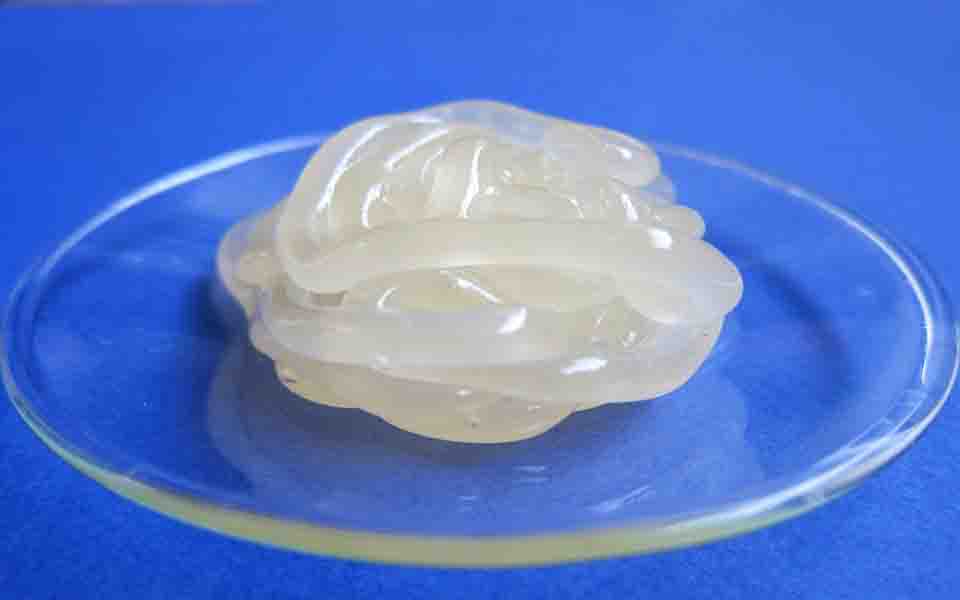Introduction to Siloxane Release Agent - Part 2
Release Time: 2023-02-23 10:38:22
Introduction to Siloxane Release Agent - Part 2

Ointment (Cited from: https://pixabay.com/zh/photos/gel-ointment-pharmaceutical-1243604/)
Cover Photo cited from: https://pixabay.com/zh/photos/rain-umbrella-plastic-water-cold-2590618/
In last time, we have introduced about some basic features and the categories of siloxane release agents. From the last article, we could clearly see that those siloxane release agents have a variety of products and could be applied widely in different industries. Today, we are stepping further to the more detailed properties and applications of siloxane release agents.
Properties of Siloxane Release Agents
When we compare organic siloxane release agents and non-siloxane release agents, they could be compared from several aspects.
The first aspect is the form of a drug. The common non-siloxane release agent usually uses ceresin wax or aliphatic acid to be the release agent, but they could only have pure form of a drug; in the opposite, organic siloxane release agents have many shapes and forms of a drug which could be applied in body oil and all other kinds of liquids or solvents. Therefore, siloxane release agents are more convenient in applying in different usages.
The second is the different working temperature. It is due to the macromolecular structure of organic silicon polymer is formed by Si-O key, and Si-O key has high key energy and it has excellent heat resistance. The stable working temperature of siloxane release agent is over almost all of the processing temperatures of plastics or resins. Thus, to apply siloxane release agent could avoid the resolution or carbonization.
The peeling strengths are also different. The organic silicon is the low-surface-energy material. Therefore, the release agent that is made of organic silicon polymer has the minimum peeling strength. In other words, it is the easiest to demould by applying siloxane release agent.
As for the safe consideration, if we only talk about the surface energy, organic fluorine polymer and organic silicon polymer both belong to the materials which have the lowest surface energy. But when the temperature is over the allowed using temperature, organic fluorine polymer could be resolved to release some poisoned matters; but the organic silicon material has a good heating resistance and could endure almost all types of plastic-processing temperatures. Even the produced matters from overheating resolution are also safe and non-poisoned.
As for the life cycle, it is also due to organic silicon material has good heating resistance, it could be used for a very long time rather than other products.
Organic siloxane release agents could be widely used in all kinds of plastics’ processing procedures. They could be used for the injection processing method of thermoplastics, but also could be used for the moulding, shaping and processing of thermoplastics. They could help to reduce the corresponding labor works, to increase the manufacturing effectiveness and improve product quality of plastics.
If we compare different types of silixoane release agents, they have different applications and effects. Pure silicone oil type and spray type are the most convenient to use, they are just to be coated or sprayed on the surface of mould and then we could jump to the shaping processing of plastic products and the products are easy to be demoulded. However, after once or limited times of demoulding, the release agents should be painted or sprayed again. Ointment type’s coating process is more complex than the solvent type, but the working cover layer which is formed by ointment type is thick and thus more suitable to the moulds which has rough surfaces and have a larger number of times of demoulding.
Selections & Applications of Siloxane Release Agents
Organic silicon release agents include different types of forms and forms of a drug; they are separately used in different plastics and different processing ways. It is according to these, the user should select different release agents. For example, for the glass, ceramics and many other anti-corrosion materials, organic chlorosilane which has initial corrosive reactions could be applied by adding dimethyldichlorosilane as the diluent. However, the more common application siloxane release agent is silicone oil, silicone rubber and silicon resin.
For the fast injection shaping processing of one-mould-many-products type, it is more suitable to apply spray type; when applying in large thermo mould processing products, emulsion type is more applied; to apply in the cold mould, emulsion type will be improper but to use solvent type siloxane release agent to save the drying time of release agents.
To be more specific, when consider about the selection of applications of siloxane release agents, there are few considerable factors like the material, structure and shape of moulds, the types of the moulded products, the using temperature and the diluents. First of all, metallic mould temperature is the main accordance of the selection of release agents. From the perspective of security of using hot moulds, solvent types are not applicable but to use emulsion, ointment or silicone oil type. Cold moulds could not use emulsion either, in most times, the solvent and silicone oil type is preferred. However, in the more common situations, for the simple-structured and higher-temperature moulds, cheap and safe emulsion types are always been chosen.
Silicone oil has no reshaping effects on all kinds of rubbers or plastics, thus they are more suitable to be applied as their release agents. But, silicone oil do will have some left out on the surface of the final products and influence the effectiveness of further processing.
For any diluent, which includes the organic solvents, propellant and water, should not be left on the surface of moulds. Otherwise the product quality will be degraded. If the diluent is chosen wrongly, the silicone oil on the surface of moulds may be distributed non-averagely and lead to the breaching or over speed aging of the products.
